10 Ways To Build Trust in a Relationship
 Trust: You cannot have a healthy relationship without it. And yet, virtually all of us can bring to mind a scenario where our trust has been broken.
Trust: You cannot have a healthy relationship without it. And yet, virtually all of us can bring to mind a scenario where our trust has been broken.
But how do we develop trust in the first place? Can trust that’s been broken be rebuilt?
This article explores how to build trust in a variety of relationships, including practical tips and activities that build trust.
Please note that the scientific literature on building trust is limited. Plenty of research exists examining the importance of trust and what it is, but that research doesn’t tend to lay out practical steps for building trust. Therefore, much of the research supporting the following article is from web sources, not journal articles.
Before you continue, we thought you might like to download our three Positive Relationships Exercises for free. These detailed, science-based exercises will help you or your clients build healthy, life-enriching relationships.
This Article Contains:
- How to Build Trust: 12 General Tips
- How to Build Trust with Your Partner in a Marriage or Relationship
- Rebuilding Trust After Cheating, Affairs, and Infidelity
- How to Develop Self-Trust
- Trust-Building Games and Exercises for Group Therapy
- Building Trust and Credibility in Business as a Leader
- 10 Trust-Building Activities for Teams and Employees in the Workplace
- How to Build Trust with Customers, Patients, and Clients
- The 5 Best Books on Building Trust
- 12 Quotes on Building Trust
- A Take-Home Message
- References
How to Build Trust: 12 General Tips
The following suggestions about how to build trust were provided by Carthage Buckley (n.d.), a stress and performance coach.
Here are her suggestions:
1. Be true to your word and follow through with your actions
The point of building trust is for others to believe what you say. Keep in mind, however, that building trust requires not only keeping the promises you make but also not making promises you’re unable to keep.
Keeping your word shows others what you expect from them, and in turn, they’ll be more likely to treat you with respect, developing further trust in the process.
2. Learn how to communicate effectively with others
Poor communication is a major reason why relationships break down. Good communication includes being clear about what you have or have not committed to and what has been agreed upon.
Building trust is not without risk. It involves allowing both you and others taking risks to prove trustworthiness. To navigate this, effective communication is key. Without it, you may find the messages you’ve intended to send aren’t the messages that are received.
3. Remind yourself that it takes time to build and earn trust
Building trust is a daily commitment. Don’t make the mistake of expecting too much too soon. In order to build trust, first take small steps and take on small commitments and then, as trust grows, you will be more at ease with making and accepting bigger commitments. Put trust in, and you will generally get trust in return.
4. Take time to make decisions and think before acting too quickly
Only make commitments that you are happy to agree to. Have the courage to say “no,” even when it disappoints someone. If you agree to something and can’t follow through, everyone involved is worse off.
Be clear about what you have on your plate, and keep track of your commitments. Being organized is a necessary part of building trust with family, friends, and colleagues. It enables you to make a clear decision as to whether to agree to requests of your time and energy.
5. Value the relationships that you have—and don’t take them for granted
Trust often results from consistency. We tend to have the most trust in people who are there for us consistently through good times and bad. Regularly showing someone that you’re there for them is an effective way to build trust.
6. Develop your team skills and participate openly
When you take an active role in a team and make contributions, people are more likely to respect and trust you. It’s also imperative when building trust in a team to show your willingness to trust others.
Being open and willing to make contributions and to engage demonstrates this. In other words, take what others say into consideration, show that you are listening actively, suggest your thoughts and feedback in a respectful way, and demonstrate that you are willing to be part of the team.
7. Always be honest
The message you convey should always, always be the truth. If you are caught telling a lie, no matter how small, your trustworthiness will be diminished.
8. Help people whenever you can
Helping another person, even if it provides no benefit to you, builds trust. Authentic kindness helps to build trust.
9. Don’t hide your feelings
Being open about your emotions is often an effective way to build trust. Furthermore, if people know that you care, they are more likely to trust you.
Emotional intelligence plays a role in building trust. Acknowledging your feelings, learning the lessons that prevail, and taking productive action means that you won’t deny reality—this is the key to building trust.
10. Don’t always self-promote
Acknowledgment and appreciation play an important role in building trust and maintaining good relationships. Recognizing and appreciating the efforts of others shows your talent for leadership and teamwork and increases the trust others have in you.
On the other hand, if people don’t demonstrate appreciation for a good deed, they appear selfish. Selfishness destroys trust.
11. Always do what you believe to be right
Doing something purely for approval means sacrificing your own values and beliefs. This decreases trust in yourself, your values, and your beliefs. Always doing what you believe is right, even when others disagree, will lead others to respect your honesty.
Interestingly, when building trust, you must be willing to upset others on occasion. People tend not to trust those who simply say whatever they think others want to hear.
12. Admit your mistakes
When you attempt to hide your mistakes, people know that you are being dishonest. By being open, you show your vulnerable side, and this helps build trust with other people.
This is because they perceive you to be more like them—everyone makes mistakes. If you pretend that you never make mistakes, you’ll make it difficult for others to trust you because you have created an unnecessary difference between the two of you. When all that a person sees is the “perfection” you project, they likely won’t trust you.
How to Build Trust With Your Partner in a Marriage or Relationship
Andrea Bonior, a licensed clinical psychologist, professor, and author, shares the following advice for building trust with a partner in a marriage or relationship. Bonior suggests that trust is necessary for emotional intimacy and that it’s necessary for a healthy, close relationship (2018). It’s much easier and faster to lose trust than it is to build it up.
To develop trust with your partner, Bonior suggests you “say what you mean and mean what you say” (2018).
As young children, we quickly learn to tell if someone is being untruthful. It may be that someone doesn’t follow through with their promises, or a parent makes threats they don’t follow through on. This form of self-protection evolved to help us survive, so nearly all of us are able to notice the “proverbial boy crying wolf” (Bonior, 2018).
As we grow older, we finetune our expectations and behavior by learning not to trust an untruthful person, which helps protect ourselves from being let down again. So, when trying to develop trust in a relationship, don’t say things that you won’t follow through with.
It’s also important not to say things that don’t accurately reflect how you feel. Consistently telling lies, even if they feel small or inconsequential, will result in the other person no longer trusting what you say (Bonior, 2018).
Another aspect of building trust is to become increasingly vulnerable in the relationship as it develops. People feel trust when they rely on one another. In the relationships we have, we build trust through vulnerability (Bonior, 2018). Part of this will happen automatically over time through our daily interactions—such as feeling assured that our partner will be there if they have offered to pick us up from work (Bonior, 2018).
It is also important to be emotionally vulnerable (Bonior, 2018). Building trust requires you to open yourself up to the potential risk of being hurt. This could be revealing things that scare you or exposing aspects of yourself that you don’t consider attractive (Bonior, 2018). In other words, trust is developed when our partners have the chance to let us down or hurt us, but they don’t.
Respect plays an important role in trust. One of the most emotionally enduring ways we can be harmed by our partners is if they belittle us or look at us with condescension or contempt, because a lack of respect destroys trust (Bonior, 2018).
Any relationship, even that between a sales assistant and customer, involves a basic level of trust, and thus respect (Bonior, 2018). But maintaining that basic level of respect becomes even more important the more emotionally intimate the relationship is (Bonior, 2018).
Unfortunately, we occasionally show our partners our worst qualities. We may be more prone to lash out at people we are close to than we would at a stranger. We lose sight of the fact that respect is even more significant to those we love due to the harm that lack of respect over time will cause (Bonior, 2018).
It’s not necessary to be perfectly polite all the time with your partner. However, remember that every time you treat your partner in a way that breaches a basic level of respect, you will damage the connection you have. Plus, it will make it more challenging for your partner to trust you over time (Bonior, 2018).
Additionally, to build trust with your partner, be prepared to give him or her the benefit of the doubt. For this idea, Bonior gives the example of a patient and his doctor, who he’s been seeing for ten years and who he trusts and respects (2018).
Bonior describes the difference between how the patient feels about the trusted doctor’s opinion and the opinion of a doctor whom the patient has never seen before. While the patient may be prepared to have confidence in the new doctor because of her medical qualifications, it is likely that he will feel a lot more comfortable with the doctor with whom he has developed trust.
It may even be easier for him to hear difficult or surprising medical news from his regular doctor because he will be prepared to give the doctor the benefit of the doubt because of the trust and history they share (Bonior, 2018).
One more way to build trust in a relationship is to express your feelings in a functional, helpful way (Bonior, 2018). An important component of emotional intimacy is being able to talk about one’s feelings without shouting, verbally attacking, or shutting down the conversation (Bonior, 2018).
Therefore, in order to build trust, develop ways of discussing difficult feelings that are collaborative and respectful. To build trust, you need to give him or her the chance to connect with the “real” you—which includes your emotional complexity (Bonior, 2018).
Finally, to build trust with your partner in a marriage or relationship, it is important to consider reciprocity (Bonior, 2018). In other words, be willing to give as well as receive. It is necessary for both partners to feel comfortable with the levels of giving and receiving.
Rebuilding Trust After Cheating, Affairs, and Infidelity
If you have been lied to or hurt, it can take a very long time to learn to trust again (Buckley, n.d.). You might automatically think you should break up with the person who betrayed your trust. However, others may wish to keep a relationship going, believing that their partners’ actions aren’t bad enough to give up on the relationship.
Either way, it’s important to build up trust again after difficult situations, either between you and your partner or you and future partners and friends.
When trust has been broken, such as after cheating, and you are trying to rebuild trust, it may not be wise to cast all your doubts aside in one go (Bonior, 2018). However, if you still hope to rebuild trust, you will need to let some of your doubts go, or suspend them, to give your partner the chance to come through for you (Bonior, 2018). Then, if your partner doesn’t, it is he or she who is disrupting the trust-building.
In any relationship, especially in one that’s been threatened by infidelity, healthy communication plays an important role. Each partner should be able to talk honestly, and if an argument ensues, both people should “fight fair” without drudging up the past (Love is Respect, 2014).
To rebuild trust, keep in mind that your relationship may look different after cheating, affairs, or other infidelities. However, it also is possible to build something new, though both partners need to be willing to build a new relationship together (Love is Respect, 2014).
It is extremely challenging to remain in the present and move toward the future after someone cheats—it can be easier to remain in or worry about the past (Love is Respect, 2014). While the someone who’s been cheated on has the right to feel hurt, angry or sad, if he or she cannot move on from those feelings, it may be a sign that the relationship cannot continue.
It is important, although difficult, to trust yourself. Learning to trust yourself and your own feelings and reassuring yourself that you will be okay moving forward is the key to any healthy relationship (Love is Respect, 2014).
Perhaps the most important aspect of rebuilding trust after a partner has cheated is to communicate openly (Love is Respect, 2014). Talk and truly listen to each other. Both partners should think about what the other needs.
Partners should openly share their needs, and consider whether they are willing to meet those needs. If either party feels that they are not willing or able to meet his or her partner’s needs, the couple may need to seriously reconsider whether continuing the relationship is the right thing to do (Love is Respect, 2014).
However, what if you’re the one who cheated? For example, maybe you cheated on your partner, but you have both agreed to try and make the relationship work. What do you need to do going forward?
To begin with, take responsibility for your actions. Admit to your behavior and assume responsibility for it. Also, have an understanding of how your behavior has affected your partner’s feelings. Reflect on your actions, and think about what made you decide to cheat (Love is Respect, 2014).
Going forward, keep your promises. To show that you can be trusted, follow through with what you say you are going to do. For example, if you say you’re going to call, make sure to actually call.
It’s also important to give your partner space during this time. Your partner may want some time apart to process what happened, and he or she has every right to feel hurt and angry about your cheating (Love is Respect, 2014). Give him or her the space to express these feelings to you.
The process of rebuilding trust takes time; it can’t happen overnight. Still, keep in mind that your partner has no right to treat you abusively. Despite breaking their trust, you still have the right to your own privacy (Love is Respect, 2014).
How to Develop Self-Trust
The fact of the matter is that you can never count on another person 100% of the time. However, there is one person we know that we can count on: ourselves. As Johann Wolfgang von Goethe said,
“As soon as you trust yourself, you will know how to live” (Fahkry, 2016).
Self-trust is an important concept, as possessing it enables you to protect your own needs and safety (Tartakovsky, 2018). It allows you to have faith that you will make it through challenging situations and allows you to practice kindness toward yourself rather than pursuing perfection.
Self-trust includes having an awareness of your thoughts and feelings and being able to express them (Tartakovsky, 2018). To gain self-trust, honor your emotions and avoid relying on the opinions of others (Fahkry, 2016). This allows you to develop trust in your own ability to handle whatever arises. Self-trust is acquired by nurturing our deepest thoughts (Fahkry, 2016).
Self-trust also includes living according to your own standards and ethics and knowing when to put your own needs firsts. Having self-trust requires knowing that you can endure mistakes. Self-trust also enables you to pursue what it is that you want.
Avoid people who undermine your self-trust. Often, these people use you, and don’t want you to succeed (Tartakovsky, 2018). Although as children we often cannot control the negative people we have in our lives, as adults, we can certainly consider whether people support us and whether we actually want them in our lives (Tartakovsky, 2018).
Keep promises to yourself. Honor the commitments you make yourself, whether it be pursuing goals you set or following your dreams (Fahkry, 2016). An important part of this is making promises to yourself and keeping them (Tartakovsky, 2018).
One example of such a commitment is creating and sustaining a personal boundary. Or, go to bed earlier, or visit the doctor for a check-up (Tartakovsky, 2018). Building self-trust also includes becoming your own best friend.
Speak kindly to yourself. Everyone has a harsh inner critic, which sometimes takes the voice of a parent or a teacher from your past who made you think you weren’t good enough. However, you can reduce or eliminate the habit of listening to your inner critic. Try being more kind to yourself.
For example, if you make a mistake, you may immediately think, “I’m so stupid!” Instead, try saying to yourself, “That’s okay. It was just a minor error.” Showing yourself compassion when you make a mistake enables you to show a greater understanding of others when they make mistakes (Tartakovsky, 2018).
Self-trust is not about perfection—you must have faith in your own capacity to overcome a slip-up or failure. Self-trust is nurtured through us connecting with our emotional well-being and paying attention to any disturbances we may notice (Fahkry, 2016).
Check in with yourself. Ask yourself, “How am I doing?” Find out what is going on inside yourself rather than simply dismissing an emotional disturbance (Fahkry, 2016).
In other words, be mindful of your inner experiences (Fahkry, 2016). Self-trust develops when we honor our whole selves, regardless of whether or not we approve of certain aspects of ourselves.
Trust-Building Games and Exercises for Group Therapy
Jan Brinn from Michigan State University has compiled a list of suggestions for building trust and creating a safe environment (2014). Trust-building activities (or icebreakers) can be helpful in situations, such as group therapy, where bonding or building relationships is required.
The purpose of these exercises and games is to enable participants to discover similarities and differences between the members of the group and to develop empathy and respect.
Chairs in a Circle
Create a circle of chairs, and ask group members to sit down. Invite one person to stand in the middle and take the chair away, so there is one fewer chair than there are people in the group. Alternatively, the therapist can be a “model” and whose chair has been removed.
The person in the middle will then share something about himself or herself that other group members may relate to. For example, “My name is Jayne and I have been to Japan.”
If other members of the group either agree with the statement or have experienced the same thing, they stand up. Everyone standing (including the person in the middle) tries to find a seat on the remaining chairs.
Whoever is left standing is the new leader, and gets to make a statement. Setting a theme/topic for the statements is a possible variation for this activity.
Common Ground
Put the therapy participants into small groups, and ask them to talk about what they have in common. Encourage them to think of unusual things, as well as the obvious ones. Such as eye color.
Let the group know that they have 15 minutes to come up with as many common facts as they can. The group with the most things in common wins the game.
Tower of Trust
Divide participants into groups and explain that they have 15 minutes to build the tallest tower they can, using materials such as 50 to 100 plastic cups, or 10 to 25 pipe-cleaners.
After 15 minutes, measure each tower. Which one is tallest?
Then, ask each group to explain the process they used to build the tower, the challenges that they faced, and what they learned about working together as a trusting team.
Fear in a Hat
Once a safe and trusting environment has been established, this activity can be used to build empathy.
Provide the group with a hat, pieces of paper, and writing materials. Each member of the group will then record his or her personal fears anonymously on a piece of paper and place them into the hat.
Then, members of the group will draw a piece of paper from the hat and take turns reading them aloud and explaining how they imagine having that fear would feel. After all the fears have been read, discuss how experiencing empathy and having common fears may help teams to build trust.
Building Trust and Credibility in Business as a Leader
Building trust isn’t just important for one’s personal life, it’s also necessary in the business world. Small business leader Alice Scarlet gave advice in an article on AllBusiness.com about how to build trust and credibility as a leader.
According to Scarlet, respect is one of the most important traits a leader in business can possess. Leaders cannot earn credibility if they do not show others the respect that they deserve. Furthermore, keep in mind that a leader is not respected due to his or her power; respect results from an honorable use of that power (Scarlet, n.d.).
To earn credibility, leaders must first show that they are trustworthy. This cannot be proved through words. Instead, leaders need to put themselves in positions that show their trusting actions so that followers can believe what they see (Scarlet, n.d.).
To become a credible leader, you need to make your loyalty to the people around you evident. If a problem occurs, you can instantly earn someone’s loyalty by taking the blame instead of blaming someone else.
You must also be accountable for your actions. Therefore, if you do make an error, take ownership of the mistake. Fix it (if you can). Then, move on. A team will not trust and respect you if you place the blame on them or allow them to bear the burden of your mistakes (Scarlet, n.d.).
Credible leaders keep their goals in mind and always try to find the best ways to make those goals a reality. People will only follow someone who has a set goal or destination. Therefore, part of building trust as a leader is to focus on what the team needs to achieve in the long run and how to take the team to the next level (Scarlet, n.d.).
Don’t rely on words or speeches to win people over. Instead, focus on your actions to show people what you are capable of. Credible leaders are prepared to work hard to show others how things are done, or how goals are achieved (Scarlet, n.d.).
In order to build trust and credibility, show your expertise through your work, and don’t rely on the expertise you already have. Credible leaders continue learning throughout their careers to stay abreast of new trends and to stay ahead of others (Scarlet, n.d.).
Last, but certainly not least, is the importance of honesty. It is imperative to be honest in order to build trust and credibility as a leader. Basically, if a leader is dishonest, others won’t trust them. And, if they lost trust, they’ll lose respect too. Eventually, everything will fall apart if honesty isn’t prioritized, so use honesty as a building block of credibility.
10 Trust-Building Activities for Teams and Employees in the Workplace
Trust builds stronger, more productive teams and employees. The following activities were suggested by Justin Reynolds of TINYpulse.com, a website used by more than 1000 companies to engage and develop high-performing teams (2017).
1. Perfect Square
Give employees a rope to hold, and then ask them to stand in a circle. Then, blindfold them and ask them to drop the rope. Tell the employees to take a few steps away from where they are standing. Remove the blindfolds, and ask them to go back to the rope and try to work together to lay the rope out as a perfect square.
2. Back-to-Back Drawing
Pair employees together, then have each pair sit back to back. The idea is that they cannot see one another. One employee is given a blank pad and pencil, and the other is provided with a picture of an obscure shape. Then, it is the task of the employee who has the picture to instruct what to draw to the one with the paper.
3. Night Trail
Put together a mini obstacle course. Then, blindfold the employees and ask them to form a line. Then, give them a rope and ask them to hold onto it. The team will then try to find their way through the obstacle course by relying on one another.
4. Trust Pinball (Suitable to Larger Workplaces)
Form groups of 10, at a minimum. Ask employees to stand in a circle. Then, select one person to be the pinball, and blindfold that person. Whoever is in charge then gently pushes the person across the circle.
The person who is blindfolded will eventually bump into employees on the other side of the circle, and these people then gently push the blindfolded person toward the people on the other side. The team should take turns with who is blindfolded.
5. Willow in the Wind
Have employees form groups of approximately eight people. One person who volunteers to be the “willow” will close their eyes and let the rest of the group know when he or she is ready to fall. The group will then let the “willow” know that they are ready to catch him or her, and with their arms extended, they help one another to keep the willow upright.
6. Slice and Dice
Have the employees stand in two lines that are facing one another. Then, ask them to hold their arms out so that they intersect. The person at the end of the line then walks down this gauntlet. The team members will their arms one at a time so that the person can make it through.
7. Scavenger Hunt
Divide the employees into small groups, then ask them to find listed items as fast they are able to. Basically, whichever team is the first to find every listed item is the winner. This activity requires team members to work together, which fosters trust.
8. The Human Knot
Ask the employees to stand in a circle. Then, have each person lock right hands with someone on the other side of the circle (to really increase the challenge, ask them to lock hands with the person who is opposite them). Then, have the employees lock their left hands with a different person on the other side of the circle. Finally, the employees will try to untangle the human knot without unlocking their hands.
9. Eye Contact
Employees will take turns staring into another person’s eyes for one minute straight. This will help them get better at maintaining eye contact and increase a sense of connection between the employees.
10. Minefield
Divide employees into pairs, and put a blindfold on one person per pair. The blindfolded people, with help from their partner, will then search for objects that are scattered around the room.
How to Build Trust With Customers, Patients, and Clients
Building trust with customers, patients, and clients will lead to better outcomes in all kinds of scenarios. Here’s some advice on how to build trust with members of each category.
Customers
To build trust with customers, it is advisable to improve security. Ensure that customers feel safe when they interact with you.
This now is especially important, given the rise of online businesses (DeMers, 2017). Be active on social media in order to build visibility and attract more clients. Building visibility through social media also offers a wide amount of flexibility—you can engage with followers and clients, post images or videos, or update customers with news and information (DeMers, 2017).
It is wise to under-promise and over-deliver when it comes to all of your customer’s expectations. For example, if it will take a week to ship a package, you might tell the customer it takes 10 days. Never run the risk of not delivering what you promise (DeMers, 2017).
Make customer service your priority. If a customer has a problem and they are given prompt and helpful customer service, their experience will be memorable, and they’ll be more likely to engage your services in the future. Similarly, consider what would happen if you don’t provide that level of service: You will most likely lose that customer altogether, and it could also negatively affect your reputation (DeMers, 2017).
Set out to make your brand more personal. This may be in your interactions with customers, or in your marketing and advertising. Generally speaking, the more you talk to your customers, the better. Listen and pay attention to them.
Finally, to build trust in your customers, be as available as possible. Make sure that your brand or business is available to customers in some way. Provide multiple lines of contact, like an email and a phone number, to communicate to customers that you’re accessible.
Patients
The following tips are suggested by South University (2014).
Developing trust with patients helps them feel more comfortable, and allows them to be more candid when discussing their health.
Communication is key. Communicate with your patients often and well. This will involve getting to know your patients and perhaps learning about their hobbies, families, day-to-day activities, and working environments.
It is also very important to be a good listener. Demonstrate this by listening to all their concerns and asking them follow-up questions.
The second way to engender trust in relationships with patients is empathy. You need to have the ability to convey empathy to patients while still having boundaries that prevent you from being emotionally overwhelmed. Aim to relate to your patients but maintain boundaries so that their issues or attitudes don’t overly affect you.
Finally, instill calmness in patients. Health professionals need to be perceived as calm, competent, and in control of the situation (to a reasonable extent). Most patients will be reassured by a calm and confident demeanor. Then, if something does go wrong, they will be more able to stay calm as they will trust that you can handle it.
Clients
To develop trust in a relationship with a client, the priority should be on timely and efficient communication. Being open shows that your client is important to you. At the same time, you should do all you can to help the client feel comfortable being honest with you. You want them to trust that their concerns or ideas will be taken seriously (MBO Partners, 2018).
Even if you are stressed or feel overwhelmed, for a client to trust you it is important to maintain a positive attitude. This also conveys energy and confidence that will allow clients to have trust in your work (MBO Partners, 2018).
Your relationship with a client is professional. However, to develop trust, it is important to acknowledge that you see them as an individual, not just as a paycheck. For example, show your client that you are interested in them by asking how his or her children are doing (if you know that the client is a parent) (MBO Partners, 2018).
Sharing information with a client is one way to engender trust and confidence. This may include explaining to your client what you did, why you did it, and what led you to make certain decisions. Keep your client informed (MBO Partners, 2018).
The client needs to trust and rely on you as an expert. Therefore, even though it may be uncomfortable, you should avoid simply telling the client what you think they want to hear or holding back your true opinion. Be honest and upfront (MBO Partners, 2018).
Finally, one way to build trust with clients is to exceed their expectations. Set reasonable expectations, and don’t promise unrealistic results. Also, think about what would be valuable to a client—this can provide clues as to how you can go above and beyond in a way that your client will appreciate (MBO Partners, 2018).
The 5 Best Books on Building Trust
To get an in-depth look at how to build trust, you might want to read a book devoted to the topic. Here are five books we recommend you check out.
1. Building Trust: In Business, Politics, Relationships, and Life – Robert C. Solomon and Fernando Flores (2003)
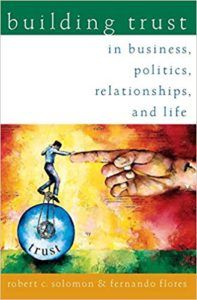
What about regaining trust once it has been broken? Solomon and Flores provide compelling answers to these questions in Building Trust.
The book also explains how to move from “naïve trust,” which is easily broken, to “authentic trust,” which is reflective, sophisticated and able to be renewed.
Available on Amazon.
2. The Thin Book of Trust: An Essential Primer for Building Trust at Work – Charles Feltman (2008)
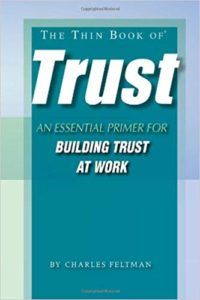
The book suggests that you can earn and keep the trust of others by understanding and consistently demonstrating trustworthy language and behavior.
Available on Amazon.
3. Building Trust: How to Get It! How to Keep It! – Hyler J. Bracey (2002)

Rather, by providing practical steps, this book sets out to explain how, step by step, to build and improve trust.
Available on Amazon.
4. The Courage to Trust: A Guide to Building Deep and Lasting Relationships – Cynthia L. Wall (2005)
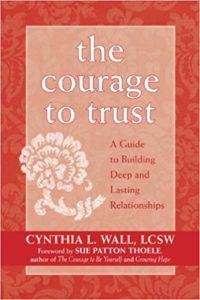
Wall explores how acts of betrayal can leave us wary and distrustful.
This is a warm, friendly guide on how to build self-confidence, intimacy, and trust. The book also provides exercises and ideas for self-reflection.
Available on Amazon.
5. Trust Works! Four Keys to Building Lasting Relationships – Cynthia Olmstead, Kenneth H. Blanchard, and Martha C. Lawrence (2013)
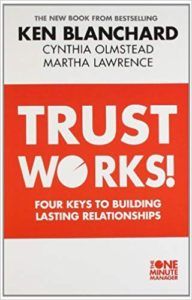
Available on Amazon.
10 Quotes on Building Trust
There are even more quotes on trust and trust issues that are available from Quote Ambition (n.d.). Here are a few:
Trust but verify.
Ronald Reagan
To be trusted is a greater compliment than being loved.
George MacDonald
Trust starts with truth and ends with truth.
Santosh Kalwar
The best way to find out if you can trust somebody is to trust them.
Ernest Hemingway
Whoever is careless with the truth in small matters cannot be trusted with important matters.
Albert Einstein
Trust has to be earned, and should come only after the passage of time.
Arthur Ashe
Only trust someone who can see these three things in you: the sorrow behind your smile, the love behind your anger, and the reason behind your silence.
Unknown
It’s hard to trust when all you have from the past is evidence of why you shouldn’t.
Unknown
I don’t trust words, I trust actions.
Unknown
Trusting you is my decision. Proving me right is your choice.
Prakhar Sahay
A Take-Home Message
The importance of trust in successful relationships cannot be underestimated: It’s the cornerstone of every healthy relationship. It’s not always easy to build trust, though as this article has shown, there certainly are steps you can take to build trust in any kind of relationship.
Probably the basis of all trust is honest communication. As soon as we are caught in a lie, our credibility plummets. Above all else, to build trust in relationships, be honest.
How do you go about building trust in both your professional and personal relationships? Perhaps you have some tips that you can share. Feel free to share your thoughts and feedback in the comments section.
We hope you enjoyed reading this article. Don’t forget to download our three Positive Relationships Exercises for free.
- Bonior, Andrea (2018). 7 ways to build trust in a relationship. Retrieved from https://www.psychologytoday.com/au/blog/friendship-20/201812/7-ways-build-trust-in-relationship
- Brinn, Jan (2014). Icebreakers part 3: Building trust and creating a safe environment. Retrieved from https://www.canr.msu.edu/news/icebreakers_part3_building_trust_and_creating_a_safe_environment
- Buckley, Carthage (n.d.). Simple strategies for building trust. Retrieved from https://www.liveyourtruestory.com/13-simple-strategies-for-building-trust-communication/
- DeMers, Jayson (2017). 7 ways to build consumer trust naturally. Retrieved from https://www.entrepeneur.com/article/293170
- Love is respect (2014). Building trust after cheating. Retrieved from https://www.loveisrespect.org/content/building-trust-after-cheating/
- MBO Partners (2018). 6 tips for building and maintaining client relationships. Retrieved from https://www.mbopartners.com/blog/6-tips-for-building-and-maintaining-client-relationships
- Quote Ambition (n.d.). Top 100 quotes on trust and trust issues. Retrieved from www.quoteambition.com/best-trust-quotes-trust-issues/
- Reynolds, Justin (2017). 15 team-building activities to build trust among co-workers. Retrieved from https://www.tinypulse.com/blog/team-building-activity-trust
- Scarlet, Alice (n.d.). 9 easy ways to build credibility as a leader. Retrieved from https://www.allbusiness.com/9-easy-ways-build-credibility-leader-19543-1.html
- South University (2014). 3 ways to build rapport with patients. Retrieved from https://www.southuniversity.edu/whoweare/newsroom/blog/3-ways-to-build-rapport-with-your-patients
- Tartakovsky, Margarita (2018). 3 ways to develop self-trust. Retrieved from https://psychcentral.com/blog/3-ways-to-develop-self-trust/
Let us know your thoughts
Read other articles by their category
- Body & Brain (41)
- Coaching & Application (49)
- Compassion (27)
- Counseling (46)
- Emotional Intelligence (23)
- Gratitude (16)
- Grief & Bereavement (19)
- Happiness & SWB (35)
- Meaning & Values (26)
- Meditation (21)
- Mindfulness (42)
- Motivation & Goals (42)
- Optimism & Mindset (33)
- Positive CBT (24)
- Positive Communication (21)
- Positive Education (41)
- Positive Emotions (28)
- Positive Psychology (33)
- Positive Workplace (38)
- Relationships (31)
- Resilience & Coping (33)
- Self Awareness (21)
- Self Esteem (38)
- Software & Apps (23)
- Strengths & Virtues (28)
- Stress & Burnout Prevention (27)
- Theory & Books (42)
- Therapy Exercises (30)
- Types of Therapy (53)

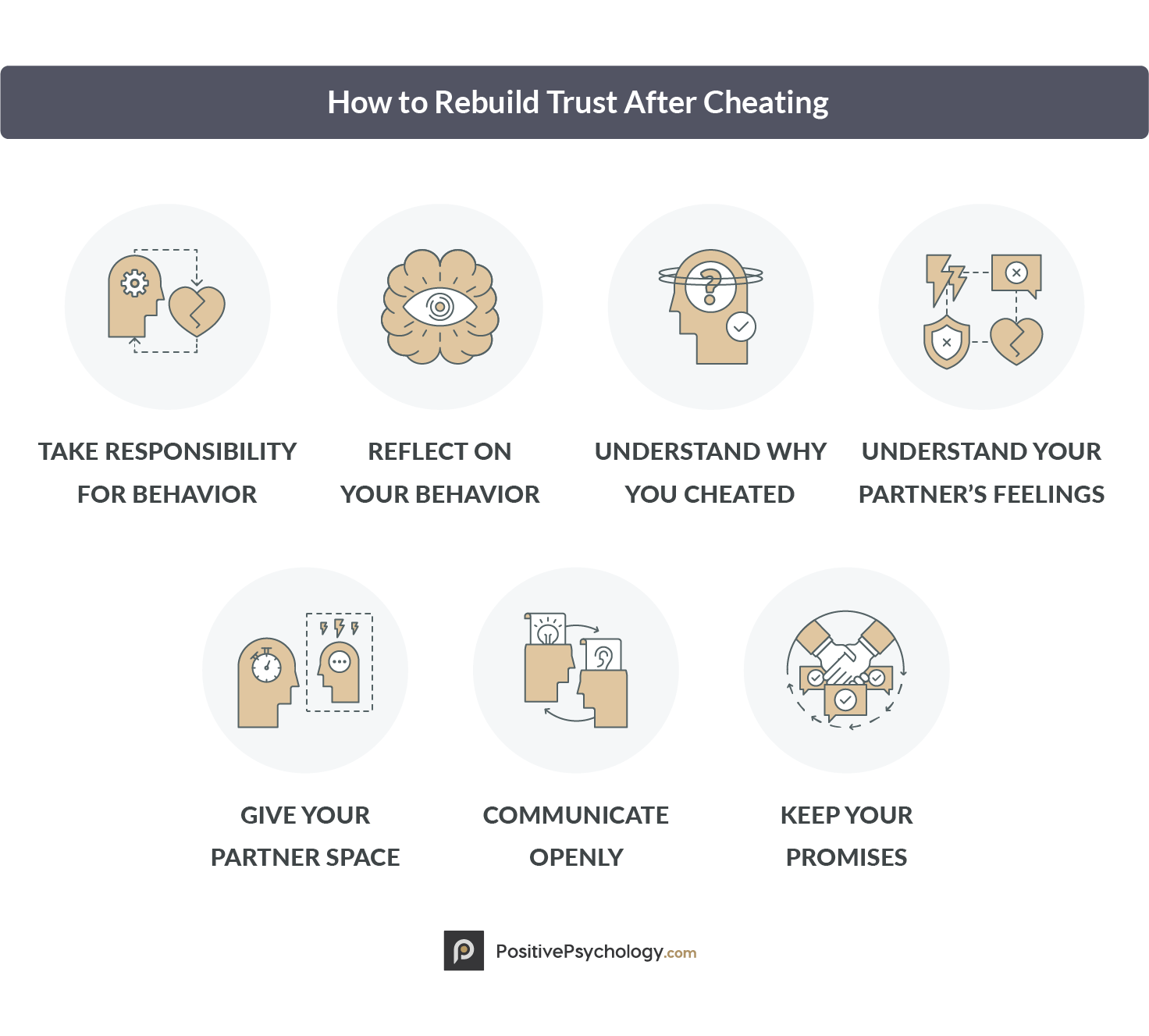
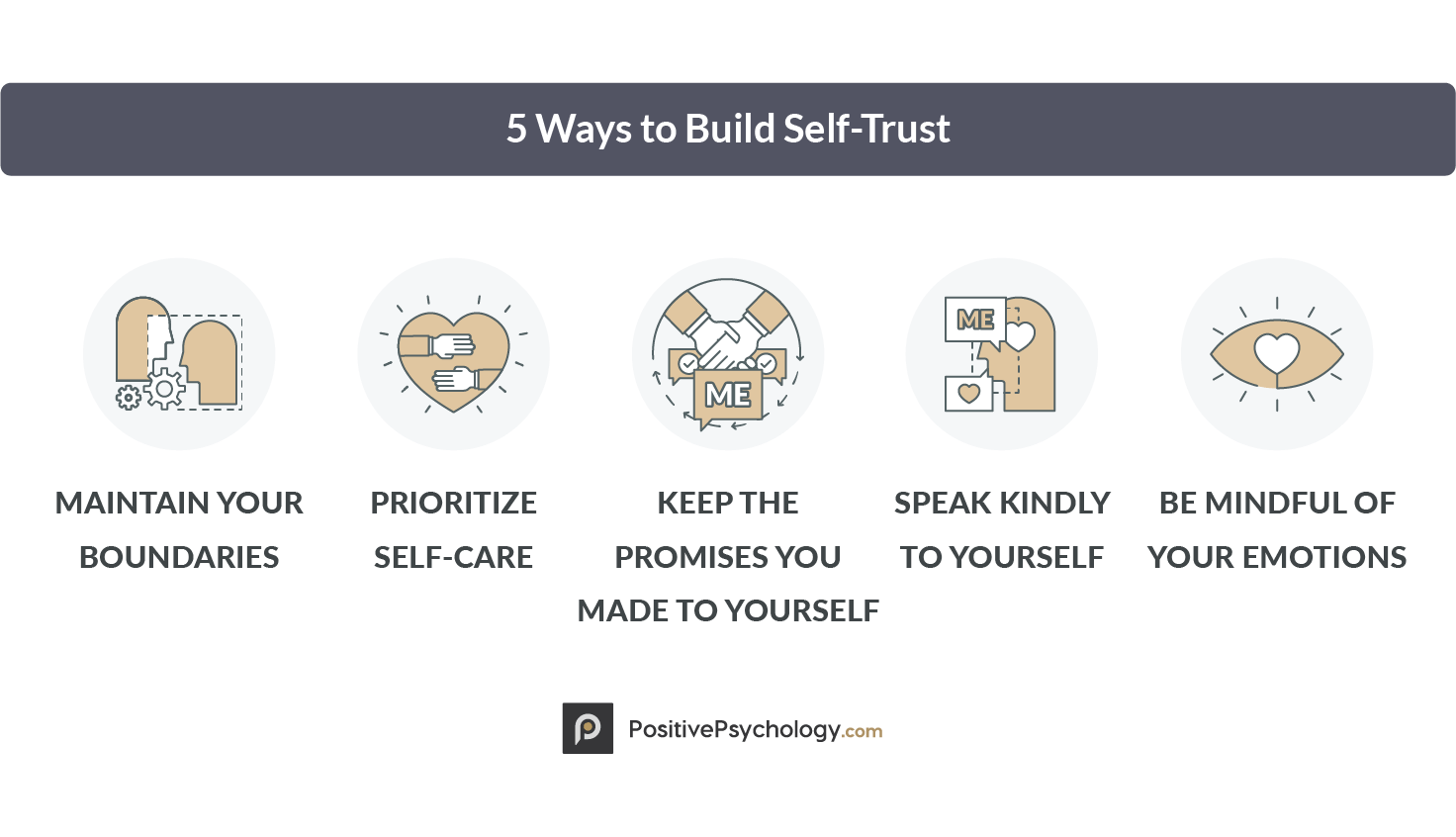



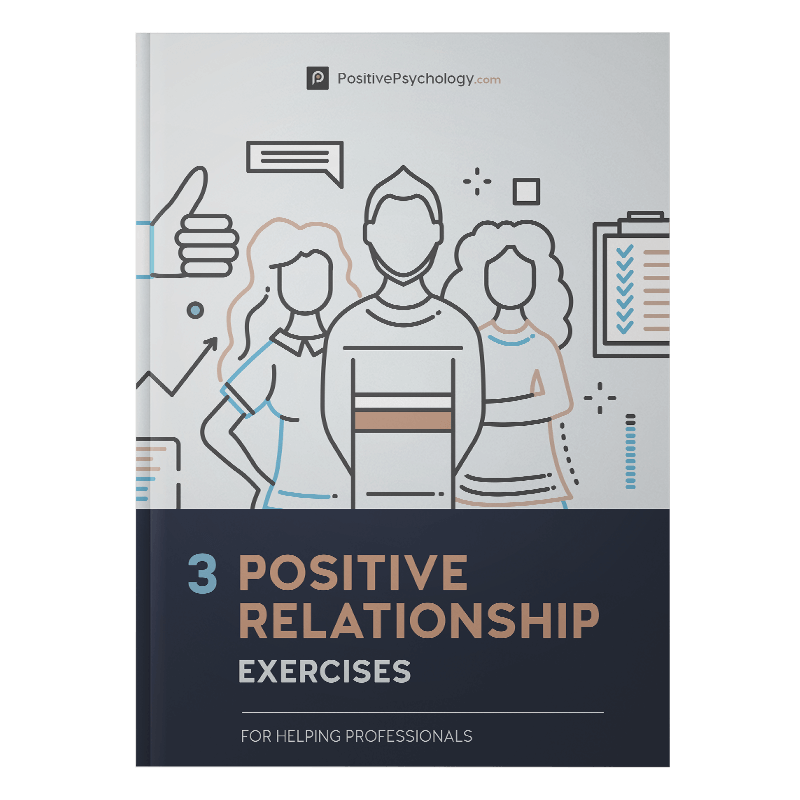
What our readers think
good afternoon. i reead your notes its very nice.thanks.
Your welcome
I think application is more better and thanking someone
Great information!
Please l need help in my relationship, l saw a chat on my bby phone with an ex then l asked him if they were getting back and he said no, l asked my friend if she saw anything suspicious, she said yes because my bby ex had told her that my bby said they should get back, l was actually angry when l heard that so l told him and he said if l had trusted him l wouldn’t look into his phone or even ask a friend about it,and that l don’t respect him, so he asked that we break up l apolized. But l don’t know how our relationship is going to be from now on because he said he has lost feelings for me and doesn’t know if there’s hope for us in the future. Please what should l do?
Hi Boabil,
I’m sorry to read about the challenges you’re having in your relationship. Usually, in these situations, it’s worth speaking to a professional couple’s counselor who can provide strategies to improve trust and communication. To this end, I’d encourage you to have a conversation with your partner to let him know that you’d like to work on the relationship and ask whether he’s willing to do the same. You can find a directory of therapists (with options to select couple’s counselors in particular) here.
It’s also good to hear that you have social support (i.e., your friend) outside the relationship. If you’re suspecting infidelity in the relationship, that’s stressful, so you shouldn’t be faulted for speaking to someone you trust about it.
I hope this provides you a little comfort, and good luck.
– Nicole | Community Manager
Boabil Mavis,
Do not doubt yourself.
Trust your instincts, intuition and your feelings as they are your best friends.
If it looks like a duck, acts like a duck and quacks like a duck…It’s most definitely a duck.
Communicate say exacty what u feel and why, remeber the best way to earn trust from someone is to show that u trust them…going through his/hers phone shows the opposite and earns mistrust… Be honest. a relationship built on mistrust will no doubt end in failure, support around u is fine but learn to trust yourself and your OWN feelings not others opinions of them… The love and feelings u feel for someone is YOURs not anyone elses… as mentioned, if the mistrust is this faar professional help may be needed…
If you really trust your man I guess should not check his phone,it could cause a betray
True love never dies and argue
A rich content, very clearly narrated and simply put.
I love this
Hi Heather,
Great article, well written and very thorough. As a sales coach / manager I teach my students / salespeople / leaders how to out position the competition by building trust using my proprietary conversation flow. This process instills trust through care and understanding.
My clients are experiencing remarkable results using this technique. I’d love to share it with you sometime.
Please let me know if you would be interested.
” This was a very brilliant message with very many useful tools. I am A practicing Caregiver and will use some of the tools that were suggested, with my clients. Thank You.”
Very good and inspiring article. This article is a very good tool for making an effective relationship with Self and others.
Very nice dude
The article was quite helpful. Examples given are practical and practicable. Talking about trust in different aspect of life was another great thing the article did.
This was very helpful and insightful and relatable thank you so much!